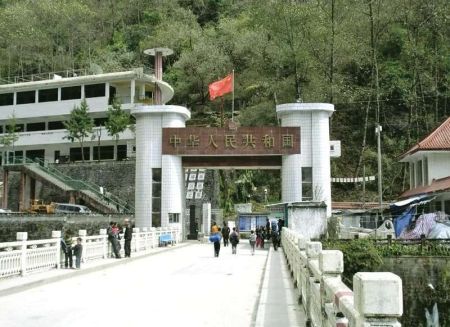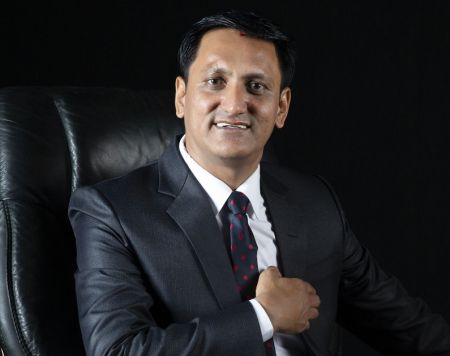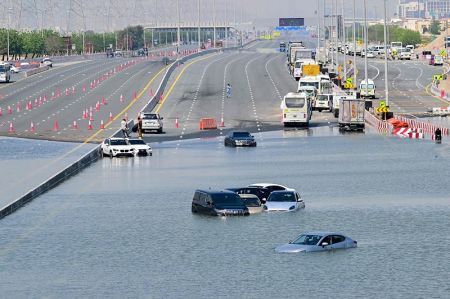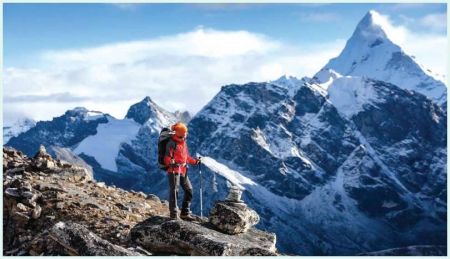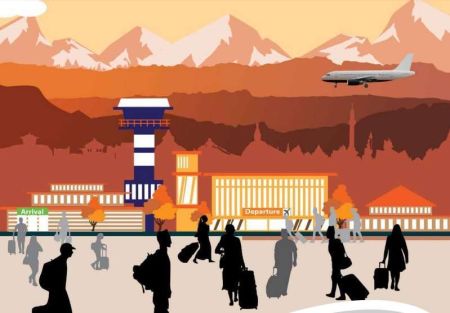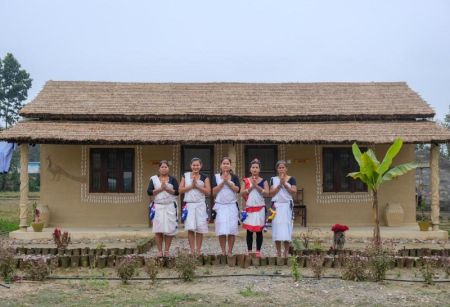.jpg)
--By Achyut Wagle
The final results of the both parts, first-past-the-post and proportional representation of the Constituent Assembly (CA)-II elections held on November 19, 2013 are now out. The fortunate part was that the polls could take place, barring some exceptions, in relative peaceful and largely fairly manner. The high-pitched verbal intimidations of poll-opposing parties, led by CPN-Maoist (Baidya) to disrupt the polls, for all practical purposes, turned out to be a hoax. The interim election government headed by the incumbent Chief Justice Khil Raj Regmi and Election Commission deserve appreciation for the effort they had put to make the polls a success, on the scheduled date. Mohan Baidya and his brigade of 33-party also deserve their due share of applause for not resorting to extreme violence which, given their strength, could have made the elections impossible. The support of international community for the elections was not in any way less important. A good silver-lining is that, Nepal slowly seems entering into an era of peaceful politics, for the groups like Baidya have too started to understand the importance of the less destructive politics.
Nepal’s agenda of peace is far larger than the constitution itself. Lasting peace and a functional constitution in many contexts could be a ‘chicken and egg’ story, but in our case, peace in the sense of non-violent politics, based on polls and opinions, has been the prerequisite to create a meaningful ambience and debate to begin to write a constitution; and ultimately to functionalise it. The entire objective of holding the second CA elections was in fact centered on Nepal’s desire to transit from conflict to a constitutional era.
But, what about the prospect of ending this conflict? It is the most excruciating of all questions and the answer is not yet emphatically affirmative. The only path to ending conflict is to respect the popular political mandate expressed through these ballots by all political forces of the country. And, the culture of such respect comes only out of unflinching faith on democracy and adherence to its true norms. This unfortunately, has long been one big black-hole in Nepali politics. The politics here is dominated by the ‘opportunistic democrats’ in the guise of the left forces of all names and hues and the some regressive rightists. As long as they can exploit legitimate constitutional means they would utilise that and, the moment their constitutional might is in the receiving end, they, particularly the communists, would immediately resort to violent tactics to capitulate the State authority. The newly emerged regional forces are no different.
These features have become real bottlenecks to Nepal’s democracy and peaceful politics. In addition to it, there is a cognizable force led by Maoist-Baidya which had ab initio boycotted this election process, thus posses extra challenge to the very functionality of the new CA. The forces now badly defeated in polls are also in all likelihood to resort to alternative course of violence to make their existence felt. The respect for popular mandate would be the first victim and ensured peace therefore could still be a mirage for a long time to come.
Regardless of that gloomy side of the picture, these elections have given clear mandate to write a pluralistic, democratic constitution. The people have put Nepali Congress on the lead closely followed by the CPN-UML with the duo jointly constituting almost two-thirds of the 601-member CA. The Congress as the oldest democratic force of the country and the UML by now transformed into liberal left force with faith on ballots than bullets have substantially increased the hopes of institutionalizing democracy, polity of plurality and patience for peaceful policy through the new constitution.
These elections pushed CPN-United Maoists into the third from the first position in the last CA. People were apparently deeply apprehensive about their agenda of ‘ethnicity and caste-based federalism’ which might easily boil down to ethnic tensions and violence. The rise of staunchly pro-monarchist RPP-Nepal as the fourth force in the CA, is in fact an additional retort to the Maoist agenda of ‘secularism’ in place of the Hindu state and ethnicity-based federalism at the cost of national integrity. The forces in the last CA with all potentially divisive voices have been virtually obliterated.
The people’s vote to every party has a very clear message - well balanced and well defined. This in aggregate gives idea about the kind of constitution people are looking for. The near two-thirds majority jointly to the Congress and UML means that the constitution should unambiguously be democratic in its essence. On federalism, people upheld the ‘capability based federalism with the state ensuring multiple identity’. The relegation of UCPN (Maoists) to the third position is still an opportunity to transform itself into a credible democratic force that doesn’t believe in provoking religious and communal sentiments to have its political ends met. People didn’t prefer the concept of all-powerful president proposed by the UCPN (Maoists) but have favoured to the idea of ceremonial president with elected prime minister with all executive powers as was proposed by the Congress and the UML to the voters.
Even if the RPP-Nepal chooses to interpret its resurgence to the fourth force as people’s increasing faith on monarchy, it is reading the wrong message. It is in fact a wish of a considerable number of ‘cow-worshiping’ Hindu voters to retain the identity of Nepal as ‘some sort of’ Hindu state. It is a clear serendipity that the party’s election emblem happens to be the ‘holy’ cow, which reaped an intrinsic symbolic advantage.
The regional parties, mainly from Madhesh, putatively with a separatist overture are largely sidelined by no other than the Madheshi voters. But, again, they still jointly could have been the forth force. The factionalism and petty interests in them have taken the toll on them. Therefore, their strength must not be underestimated.
Putting all these aspects together, the future shape of the constitution becomes clear. Nepal will be a republic with a ceremonial president and elected executive prime minister. The federalism must not be based on single-ethnic identity alone but first on capability and them multiple identity. The division of provinces cannot be like the one of ‘one-Madhesh-one-province’ as those manifestoes are clearly rejected. People want some form of religious ‘Hindu identity’ than being unconditionally secular state.
But, all these mandates could translate into constitutional provisions only if the constitution drafting process is not trampled by sheer non-respect to the popular mandate. Its ominous signs are already at the doorsteps. The UCPN (Maoist) along with other forces failing to fare as expected in elections are alleging ‘structural rigging’ of the polls and threatening to boycott the CA process. Such politics of violence and blackmailing is not only likely to jeopardise the whole prospect of a truly democratic constitution but also distort and disturb the entire process.
The onus of taking the entire process to ensure a democratic yet implementable constitution unquestionably lies on the shoulders of the Congress and the UML. They have the strength and the mandate and international support. But the danger is, their priority and efforts might just be limited to grab or share the state power and constitution writing might be pushed to shadow again, like in the past.
The rampant tri-forked factionalism in these both parties could pose a real stumbling block to the smooth sail of the process. The CPN-UML President Jhala Nath Khanal has already proposed that the two parties should lead the government on turnkey basis. But in both parties it is going to be a herculean task to select their prime ministerial candidate at first. Each of them has at least three front runners for the job. In Congress, the Party President Shushil Koirala, Senior Leader Sher Bahadur Deuba and Party Vice-president Ram Chandra Poudel are vying for, actually dying for, the post. Similarly, in UML, President Khanal, Senior Leader Madhav Kumar Nepal and powerful faction leader KP Oli have claim with their own logic of respective suitability. The natural democratic way out could be electing a parliamentary party leader in them and assigning the responsibility, but it is surely not going to be this simple; as even the defeated ones would continue to move their pawns for a checkmate.
If the practice of premiership on turnkey is adopted between the Congress and the UML, why not even smaller parties got proportionate duration of time to head the government according to their strength? At least, they will not fall short of claiming it. All this means is, entire exercise might just be concentrated in making and unmaking of the government. The politics of consensus, no doubt, is imperative to make constitution writing a reality, but the need of consensus shouldn’t be a tool to blackmail power, against the popular mandate.
Needless to say, this CA election has not been very instrumental to put the potential political conflict at the backburner for it excluded some potentially violent forces from the election process itself. The new political equation is more likely to give space to new form of frictions. In view of massive international financing to make Nepal ‘secular’ and ethnic boiling pot and voters’ clear mandate against it, this is going to be a real source of conflict afresh. When Congress leads the process and the RRP-Nepal led by Kamal Thapa becomes a balancing force, it might repeat the infamous ‘horse-trading’ episode of 1996.
(The writer is former editor of Aarthik Abhiyan National Daily.)





